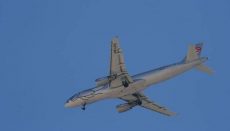Why are Flights so Expensive Right Now

In recent times, air travelers worldwide have experienced a noticeable uptick in flight costs, prompting many to wonder about the underlying reasons behind the escalation in airfares. Exploring the complexities of aviation economics reveals a multifaceted interplay of factors that contribute to the current scenario. So why are flights so expensive?
Fuel Costs and Market Dynamics
One primary driver of increased flight prices is the fluctuating cost of jet fuel, a crucial component that significantly impacts airline operations.
The volatility in global oil prices directly influences fuel expenses for carriers, leading to a need for price adjustments to maintain profitability.
As fuel costs rise, airlines are compelled to recalibrate their pricing strategies, often passing on these additional expenses to passengers through higher ticket prices.
Supply Chain Disruptions and Maintenance Costs
The intricate web of the aviation industry’s supply chain, encompassing aircraft manufacturing, spare parts procurement, and maintenance services, plays a pivotal role in determining flight costs.
Disruptions in the supply chain, whether due to manufacturing delays or logistical challenges, can lead to scarcity of essential components, delayed maintenance schedules, and increased operational expenses.
Airlines, in turn, are compelled to adjust their pricing structures to accommodate these elevated costs, contributing to the overall surge in airfares.
Regulatory Requirements and Compliance Costs
The regulatory landscape governing the aviation sector is characterized by a myriad of stringent requirements aimed at ensuring passenger safety, operational efficiency, and environmental sustainability.
Compliance with these regulations entails additional costs for airlines, ranging from mandatory safety protocols to environmental levies.
As carriers strive to adhere to these regulatory mandates while maintaining financial viability, the need to absorb compliance costs often translates into higher ticket prices for travelers.
Demand-Supply Dynamics and Revenue Optimization
The intricate dance between supply and demand in the aviation industry exerts a profound influence on flight pricing.
Fluctuations in passenger demand, seasonal travel patterns, and market dynamics all play a role in shaping pricing strategies for airlines.
Intending to maximize revenue and optimize capacity utilization, carriers adjust ticket prices based on demand forecasts, route profitability, and competitive pressures.
The interplay of these variables often results in dynamic pricing structures that reflect the evolving landscape of passenger preferences and market conditions.
Top Tips for Finding Cheaper Flights
Finding affordable airfares requires a strategic approach and a keen eye for leveraging cost-saving opportunities in the realm of air travel.
Whether you’re a budget-conscious traveler or a seasoned globetrotter seeking to maximize savings, exploring these top tips can help you unlock the potential for securing cheaper flights:
1. Flexibility is Key
Stay open to flexible travel dates and times to capitalize on off-peak periods when airfares are typically lower.
Adjusting your itinerary by a few days or opting for mid-week departures can yield significant savings.
2. Book in Advance (or at the Last Minute)
While booking early can often result in lower fares, being flexible with last-minute deals can also lead to discounted prices on unsold seats.
Monitor fare trends and strike when prices drop close to departure dates.
3. Compare Prices Across Multiple Platforms
Utilize flight comparison websites, online travel agencies, and airline websites to compare prices across different platforms. Consider search engines like:
Keep in mind that prices may vary, and exploring multiple options can help you find the best deal.
4. Sign Up for Alerts and Newsletters
Subscribe to fare alerts and newsletters from airlines and travel websites to stay informed about promotional offers, flash sales, and discounted fares.
Being among the first to know about price drops can give you a competitive edge in securing cheaper flights.
5. Use Alternative Airports and Routes
Explore nearby airports or alternative routes to your destination, as flying into less congested airports or opting for indirect flights can result in lower airfares.
Be open to creative itineraries that offer cost-saving opportunities.
6. Use Frequent Flyer Miles and Rewards Programs
Leverage frequent flyer miles, loyalty programs, and credit card rewards to offset flight costs and unlock discounts.
Accumulating points through travel and everyday spending can lead to significant savings on future flights.
7. Book Connecting Flights Separately
Consider booking connecting flights separately rather than as a single itinerary, as this approach can sometimes result in lower overall costs.
Compare prices for individual segments to potentially save on your journey.
8. Avoid Peak Travel Seasons
Steer clear of peak travel seasons and holidays when airfares are typically higher due to increased demand.
Opting for travel during shoulder seasons or off-peak times can yield more affordable flight options.
9. Be Ready to Act Quickly
When you spot a great deal or a price drop, be prepared to act swiftly and make your booking.
Prices can fluctuate rapidly, and decisive action can help you secure cheaper flights before they sell out.
10. Negotiate and Haggle
Don’t be afraid to negotiate with airlines directly or seek out unpublished fares. In some cases, speaking to a customer service representative or booking agent can lead to discounted rates or personalized deals.
Why are Flights so Expensive Right Now: Final Thoughts
The surge in flight prices can be attributed to a confluence of factors, including fuel costs, supply chain disruptions, regulatory compliance, and demand-supply dynamics.
As airlines navigate these complexities and strive to strike a balance between operational efficiency and financial sustainability, passengers are left to contend with the repercussions in the form of higher airfares.
By delving into the intricate tapestry of aviation economics and understanding the forces at play, travelers can gain insights into the underlying reasons behind the current scenario of expensive flights and anticipate how these factors may shape the future of air travel.



Sorry, the comment form is closed at this time.